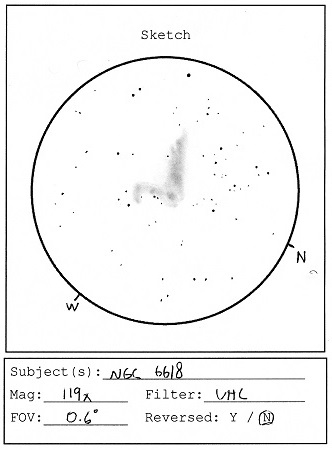
This is my sketch of the Swan Nebula, NGC6618. It was sketched through a Meade Research Grade 12.5″ F/6, using a Celestron UHC filter and a Nagler 16mm Type 2.. La Verne, CA is located in a Red Zone. Thanks for looking!
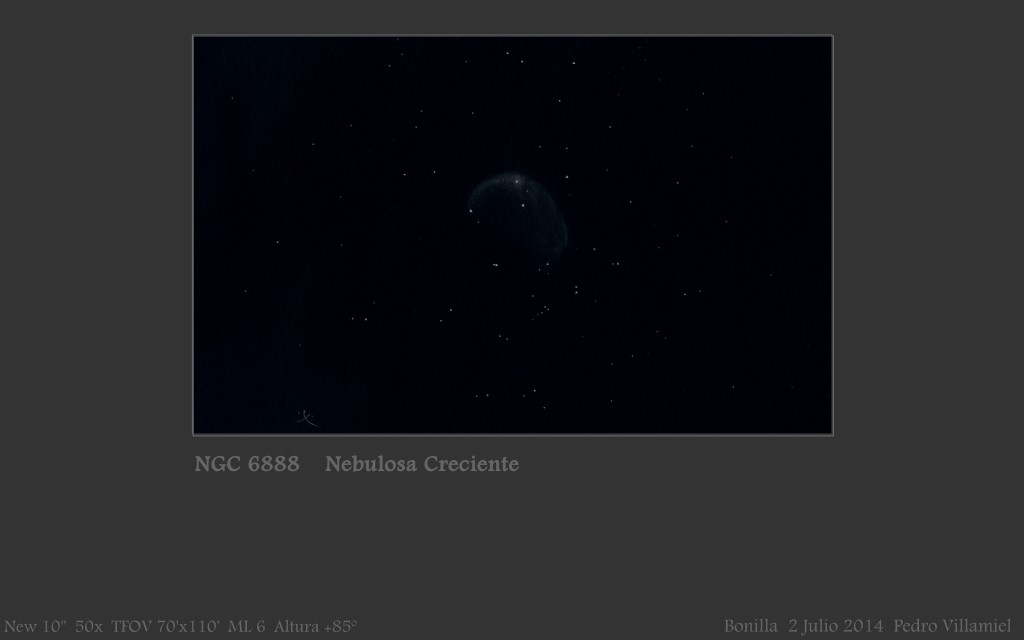
– Object Name: NGC 6888 “Crescent Nebula” – Object Type: bright diffuse nebula (in Cygnus)
– New 10” 50x TFOV 70′ x 110′ – ML 6 Height of object +85º
– Location: Bonilla-Cuenca Spain – Date: July 2, 2014
– Media: Graphite Pencil HB, torchon 1 and 130g drawing sheet – Inverted color and processed GIMP 2.8
Greetings to all visitors of this page.
Pedro Villamiel
Alcorcon, Madrid July 8, 2014
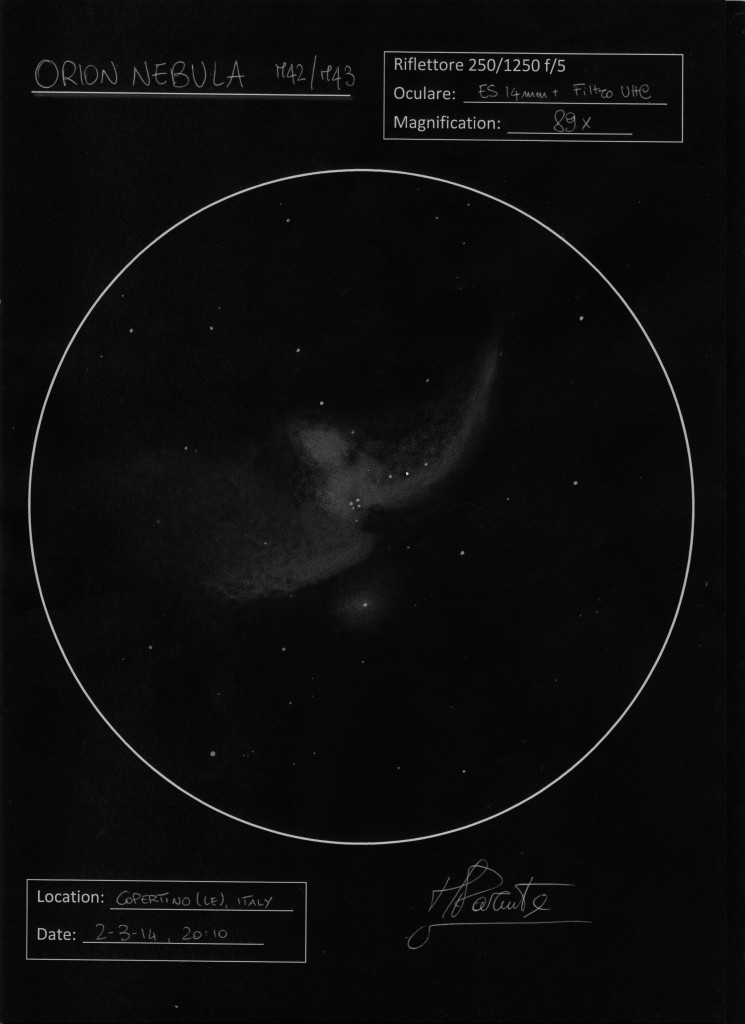
Hi Asod! This is the Orion Nebula and M43, sketched by me with my Dobsonian Telescope f/5 10”. I think M42 is the most beautiful object of our sky, i cried when I saw it the first time. So I decided to sketch it; I spent 45 minutes and I used black pencil on White paper, then the sketch was inverted and elaborated at computer. I hope you enjoy it!
Object name: M42 & M43
Object type: Nebula
Location: Copertino (LE), Italy
Date: 2-3-2014, 20:10
Media: Black pencil on white paper, inverted and elaborated at computer
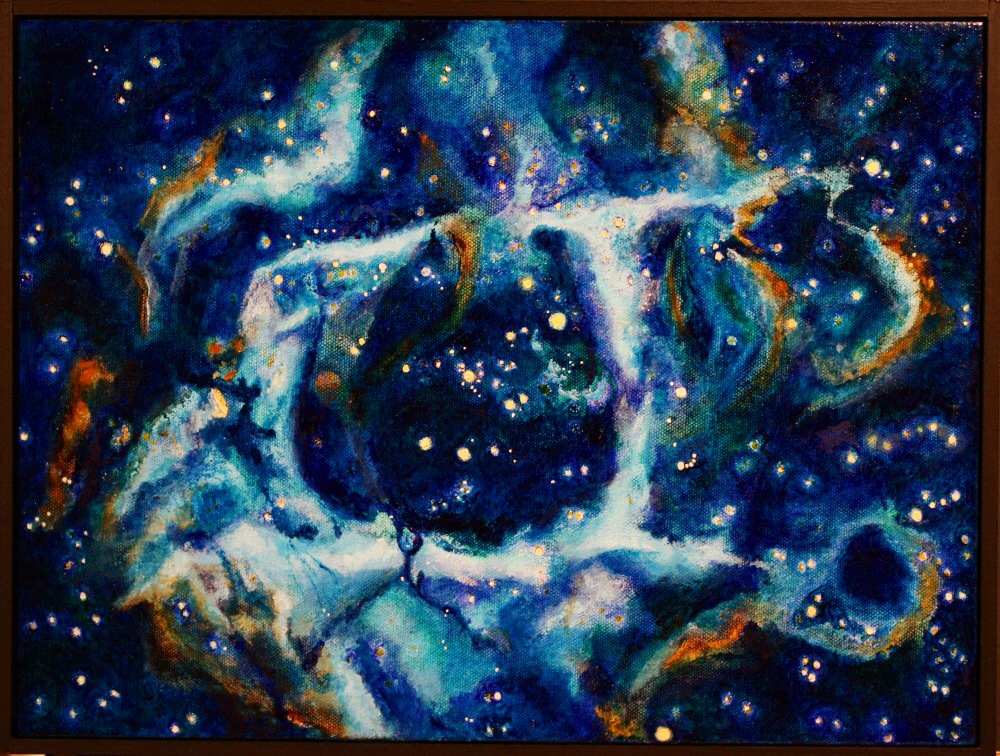
Hello here is my submission. This painting started as a sketch. -Greg Wing
Object Name (Rosette Nebula & NGC 2244)
Object Type (Emission Nebula and Open Cluster in the Constellation Monoceros)
Location (Viewed from Landis Arboretum in Esperance, NY. Painting created in my art studio)
Date (January, 2013)
Media (graphite pencil sketch on canvas overlaid with oil paints)
For some time I was only able to observe the beautiful open cluster NGC 2244 which is centrally associated with the Rosette Nebula using my modified 10″ f/4.7 dob. Then using an OIII filter, there it was! This open cluster is so visually stunning that I wanted to preserve its beauty and rather than using a rosey color for painting the nebulosity, I was influenced by the so-called “Hubble Palette”. I try to accurately position the main stars.
My Astro Paintings convey my memory transformed, a mood, an experience that can be seen and renewed with subsequent viewings. Rather than a representation, the painting is an impressions of what I have seen with my telescope, read about and seen in images made with large telescopes. Painting in my studio after observing an object not only gives me something to do on all those cloudy nights, it helps me understand and experience the object further.
http://astropaintings.weebly.com
Greg Wing
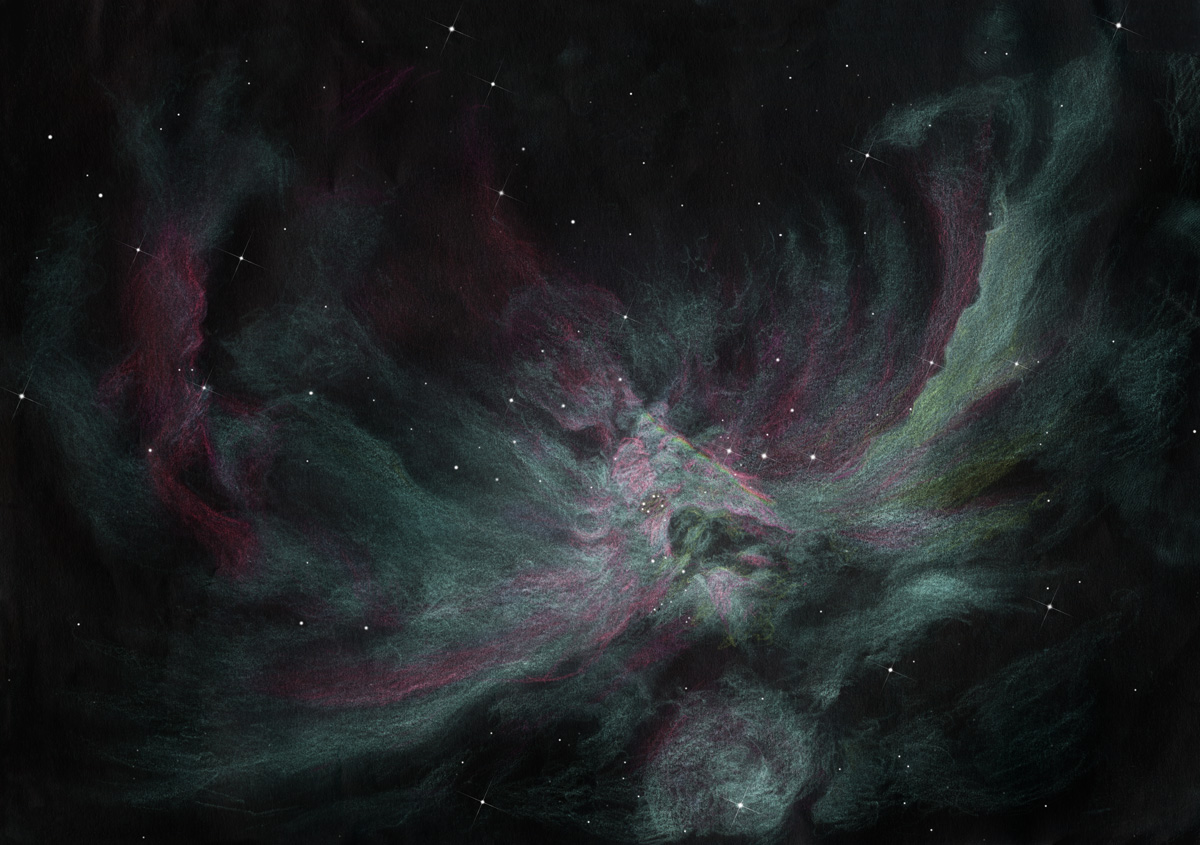
Bonjour,
Un dessin de M42 réalisé sur 2 nuits (7h d’observation) au T400 en Nouvelle Calédonie. Tous les grossissements ont été utilisés, mais principalement 300x. Ciel perfectible avec des passages nuageux génants.
C’est un dessin original format A4, en négatif couleur sur un champ préétoilé, colorisé L, V(OIII), R(H-béta) , reprise des étoiles sous photoshop.
J’en profite pour rappeler la sortie de notre ouvrage commun
“ASTRODESSIN, Observation & dessins en astronomie”
http://www.astrodessin.com/
Serge
PS : désolé pour la langue anglaise !
[English Translation via Google Translate]
Hello,
A drawing of M42 performed on two nights (7am observation) at T400 in New Caledonia. All magnifications were used, but mainly 300x. Perfectible troublesome sky with clouds.
This is an original drawing A4 format color negative on a préétoilé field colorized L, V (OIII), R (H-beta), resumption of stars in photoshop.
I want to remind the release of our joint work
“ASTRODESSIN, Observation & drawings astronomy”
http://www.astrodessin.com/
Serge
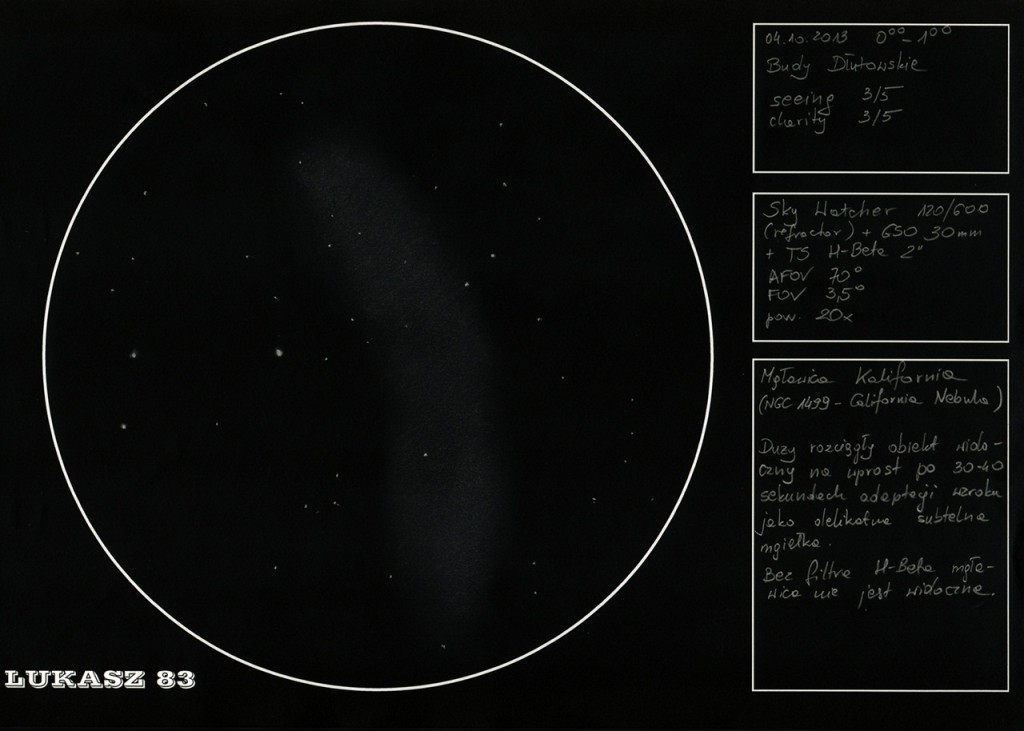
Object Name California Nebula in Perseus – NGC1499
Object Type emission nebula
Location Budy Dłutowskie – small village in central Poland
Date 04.10.2013
Media graphite pencil, white paper, color invert
Telescope Sky Watcher refractor 120/600 + GSO 30mm + TS H-Beta
Seeing 3/5 (medium)
Transparency 3/5 (medium)
NELM 5,5 mag
I heard that this object is extremely hard to observe (in visual, of course). That’s why i decided to try 🙂 I bought TS H-Beta filter which is essential during observations of this faint object.
And I can say, with this filter, nebula is quite easy and obvious to observe. It looks like delicate fog.
But you need rich-field telescope to catch it fully in one FOV – to be precise, minimum 3,5 degree of FOV is necessary. And of course H-beta filter, because without it you will see nothing.
Clear Sky
Łukasz
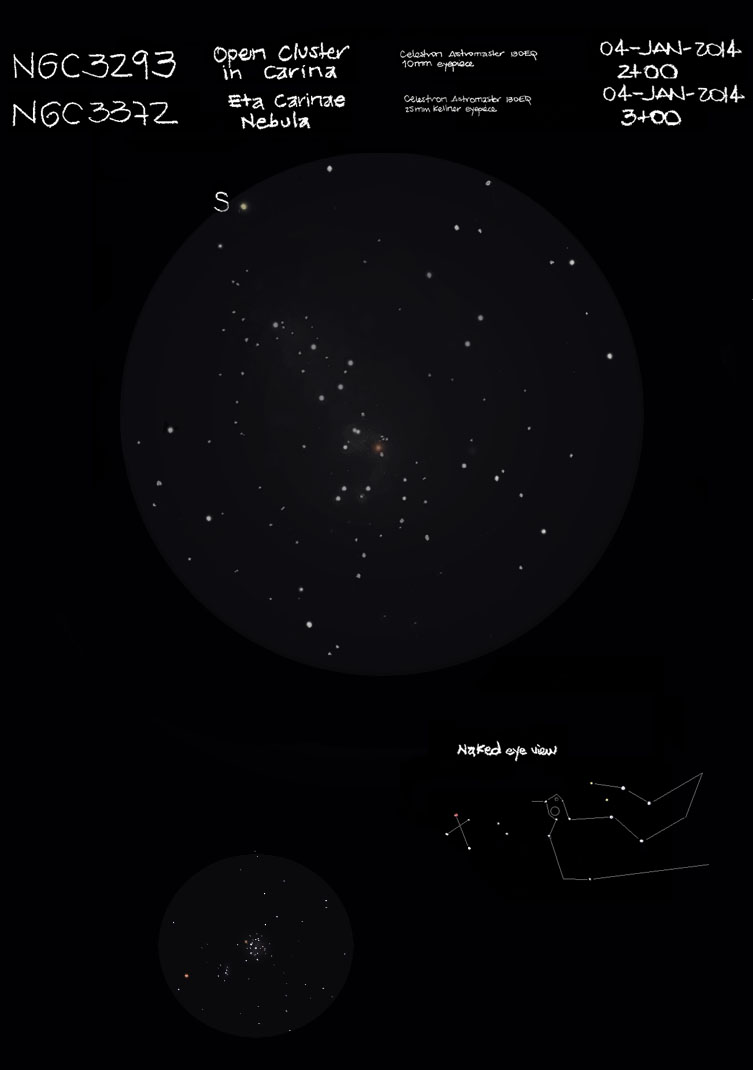
Object name: NGC 3372 and NGC 3293
Object type: Emission nebula and open cluster
Location: Bogotá, Colombia
Date: January 04, 2014
Media: Digital sketch with adobe photoshop CS2, based on a graphite pencil sketch
Equipment: Celestron astromaster 130EQ, 25mm and 10mm eyepieces
Seeing conditions: moonless, transparency 2/3, Antoniadi III, Bortle 8.
Hello all,
At the end of 2013 I had the opportunity to look once again to a clear southern sky so I decided to go for it in the first days of January. On the early morning of January 4th I went to the whole nebula, this time, through my telescope view.
It was just an amazing view that I could only sketch approximately 80% of the stars I could resolved. I am just concern about the star Eta Carinae: all the information I got about it says that it is a blue variable giant. I´m not sure why is classified like that, if in true it looks like a red giant.
Hope you know the answer.
I have the whole entry (original sketches too) of this observation in my blog.
If eventually you want to see it, here is the adrees:
http://www.pollutedskiesstargazing.blogspot.com/
Thanks to all for watching!!!
LG
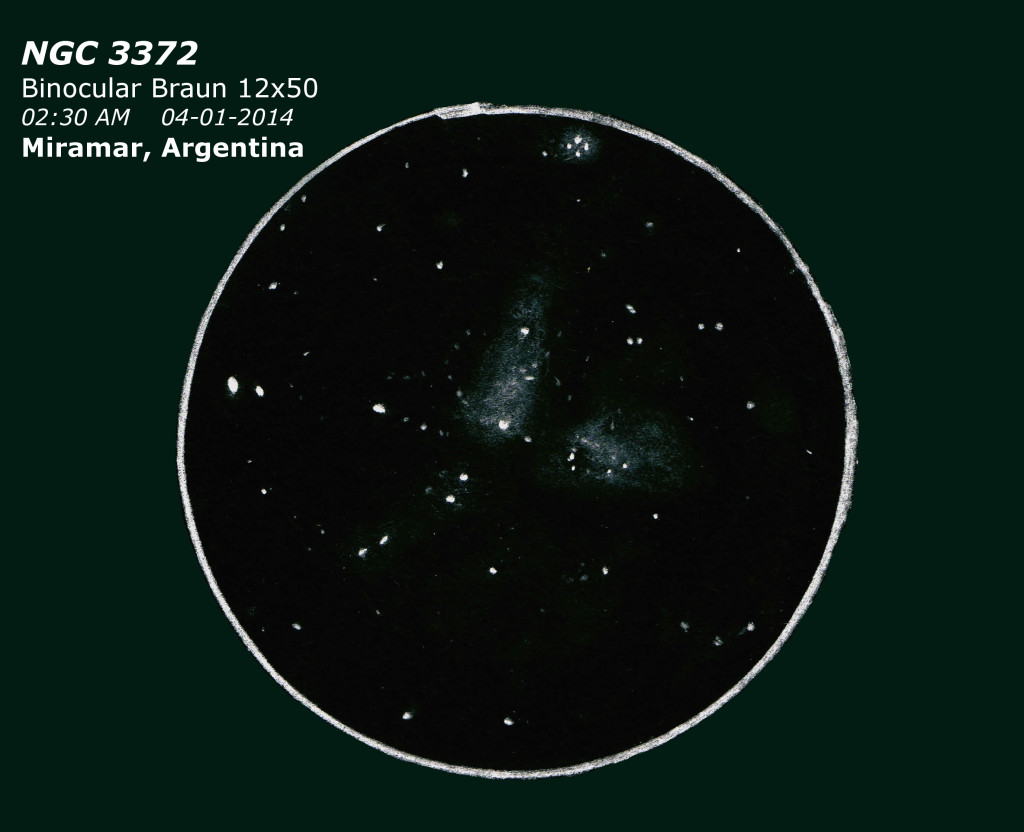
Object Name : NGC 3372
Object Type: Nebula
Location: Miramar, Buenos Aires, Argentina
Instrumental: Binocular Braun 12×50
Date: 04/01/2014
Media: graphite pencil 2H and 2B, white paper, edited with GIMP2
Hi everyone! This was the first sketch I made in the year. It was a wonderful dark night, the weather was nice and the Carina constellation was in an ideal elevation to observe it through what i call “my little sky window”, that is, my 12×50 binoculars. I always enjoy a lot the whole area of Argos which I think is the most impressive in binoculars. Thank you so much!!!!
Agustín
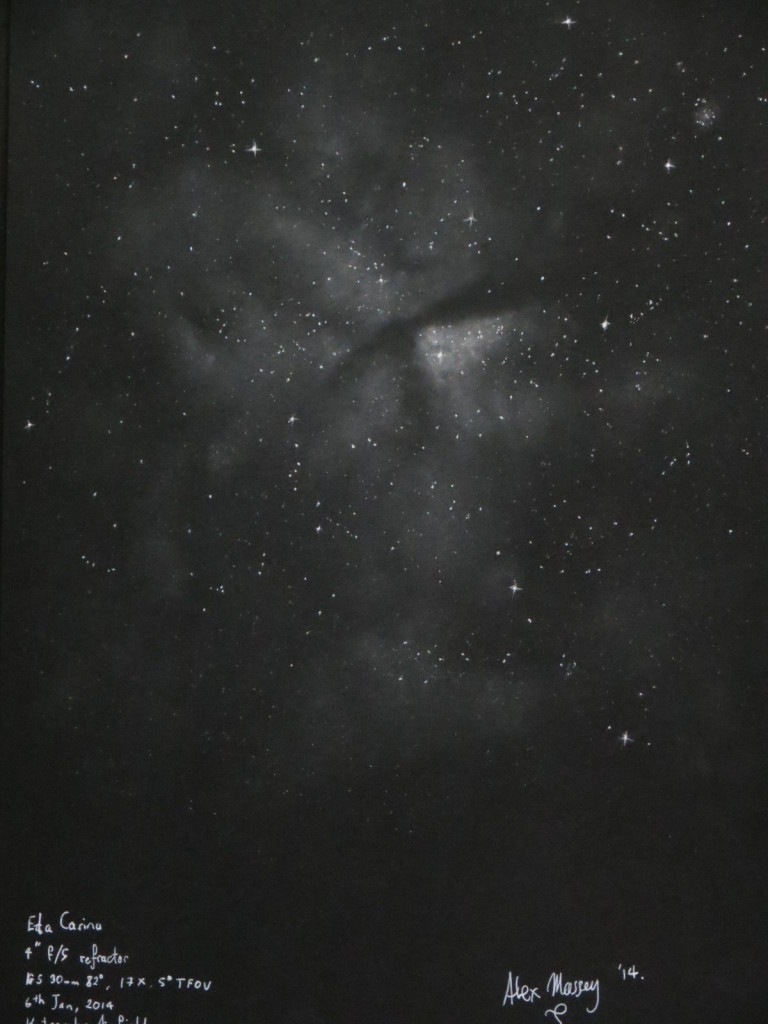
Hello all,
I finally got to go bush with my latest scope acquisition, and my smallest scope, a 4” achro refractor. I was spoilt for choice for potential targets, but I settled on one target I’ve sketched four times previously, Eta Carina. The previous sketches of Eta Carina were done with an 8” (once) and my 17.5” (twice) and once with my binos from my home. But this time, I had the opportunity to chase the full extent of the visible nebulosity of this celestial giant. With the single eyepiece I took on this outing, this little refractor gives me a whopping TFOV of 5°! This would be the perfect weapon and dark sky combination to tackle this target.
Oh my goodness! How much detail is visible! At first glance the nebulosity is nice and compact. As the sketch developed, and I slowly examined the scene, the nebulosity kept on reaching further and further out. Add to this the mottling of the background Milky Way star field that surrounds Eta Carina. I also spotted a couple of faint open clusters in the field of view.
The sketch doesn’t show the full extent of the TFOV – the sheet of paper wasn’t big enough! I was spent after this too.
I hope you find this sketch to your liking.
Alex.
Object: Eta Carina, NGC 3372
Scope: 4” f/5 refractor
Gear: 30mm Explore Scientific 82°, 17X, plus OIII filter
Date: 3rd January 2014
Location: Blue Mountains, NSW, Australia
Media: White soft pastel, charcoal and white ink on A4 size black paper.